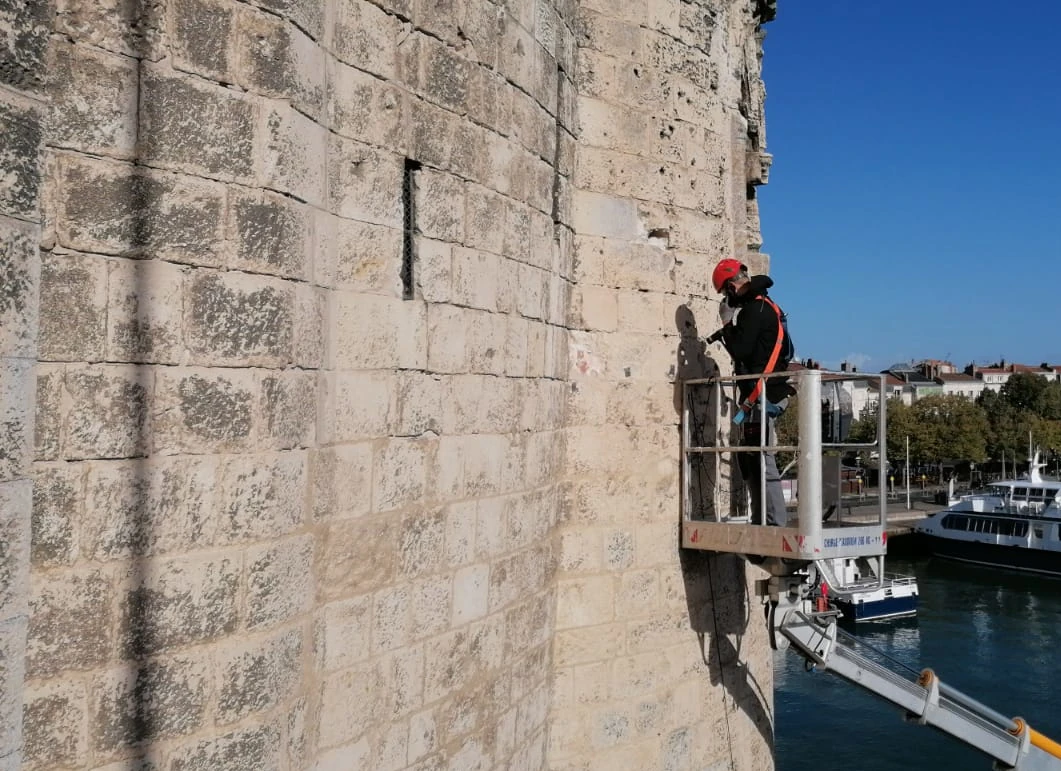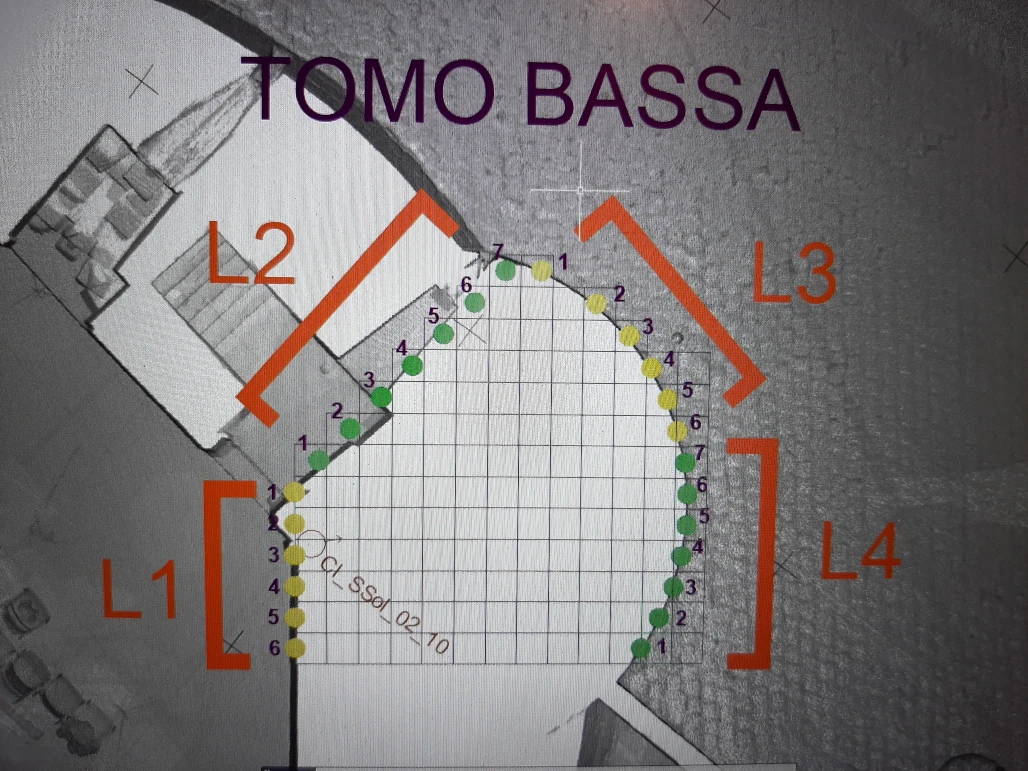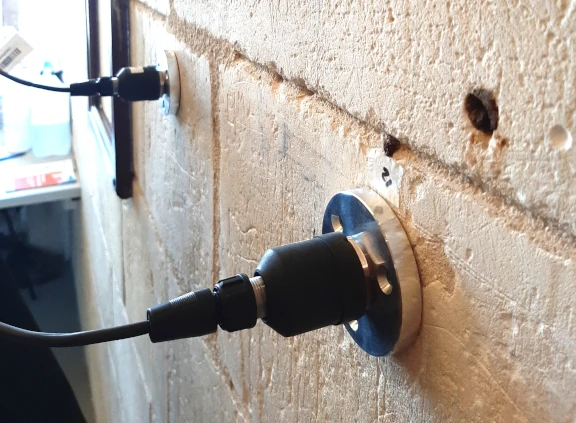


Tomographic sonic pulse velocity test
The tomographic sonic test, based on the sonic pulse velocity method, provides a detailed analysis of a wall/pillar section of interest. Based on the combination of sonic acquisitions on multiple directions in the same section, the test allows to improve the level of knowledge by a more defined “mapping” of the acquired velocity through the examined cross-section. Sonic pulses with frequencies in the range of mechanical noise (20-20000 Hz) are generated on the wall surface by an instrumented hammer and then received by a sensor (piezoelectric accelerometer) located at another point of the structure. Acquired data are then processed using a software for obtaining the velocity distribution.
Reference standard: ASTM C597–16.
